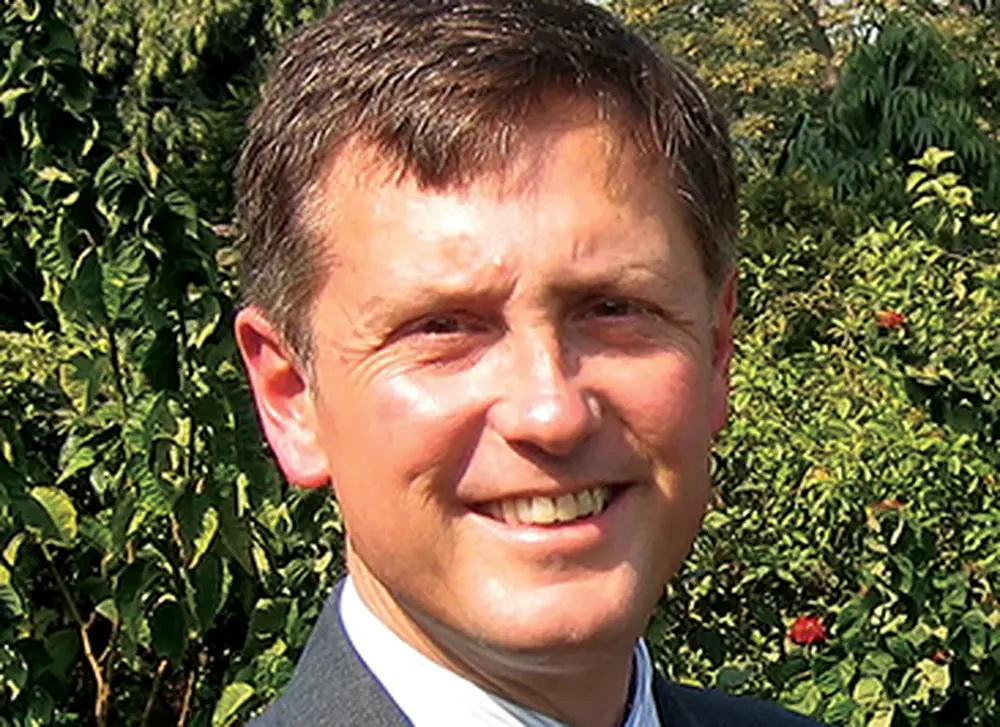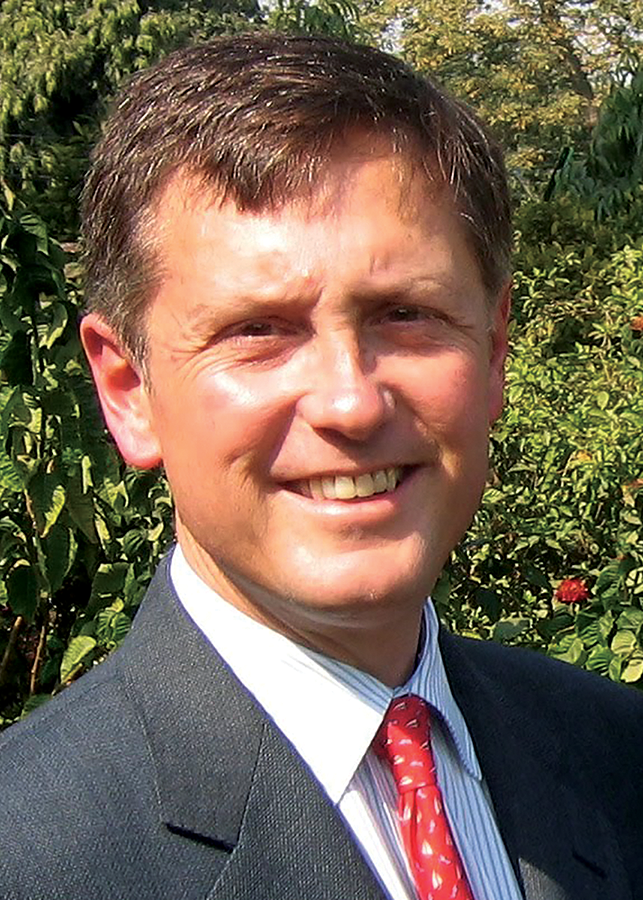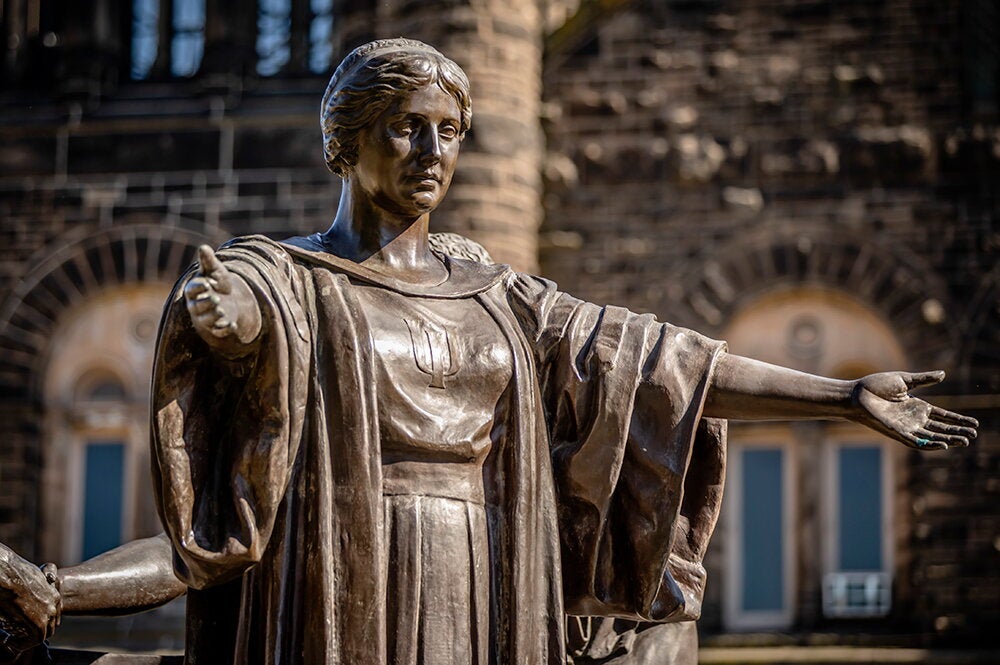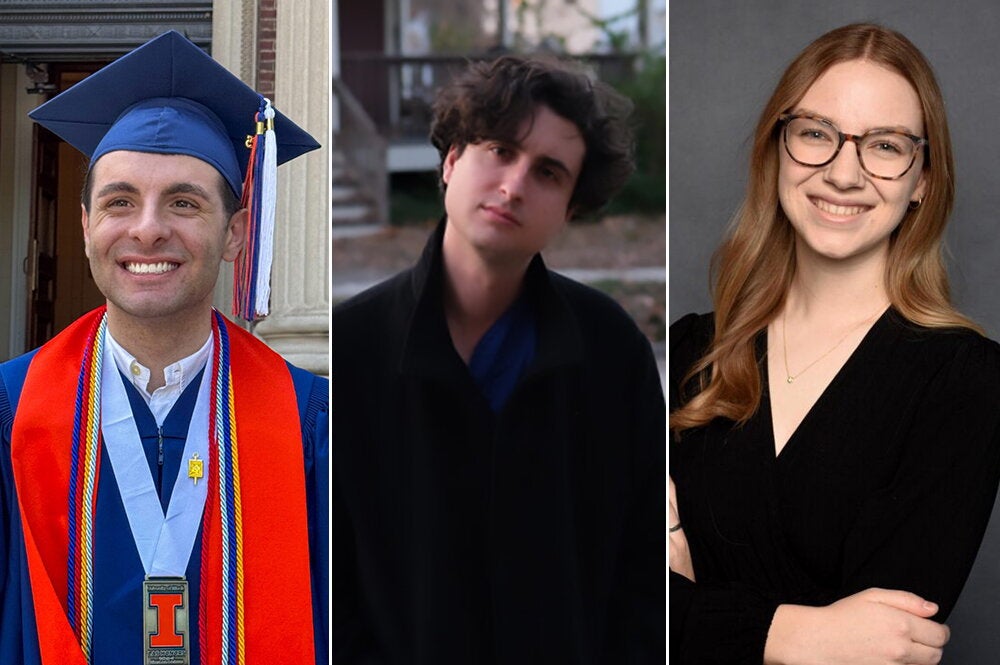

Richard Clarida was strolling across the University of Illinois campus in the winter of 1979, his senior year, when he suddenly heard a song he wrote, wafting through the open window of an apartment building. He was also thrilled to hear his song being played at a keg party, programmed between the Beatles’ “White Album” and Pink Floyd’s “Dark Side of the Moon.”
Clarida (BS, ’79, economics) had recorded the song in the attic studio of a friend on campus, and he always vowed to record music again someday. In keeping with the name of that song, “Take Too Long,” it was more than 35 years before he put out a music CD in 2016.
However, Clarida had a good excuse for the delay. During the interval, he graduated from Illinois in economics, obtained a PhD from Harvard, taught at Yale and Columbia, served on President Reagan’s Council of Economic Advisers, worked as assistant secretary with the United States Treasury, and consulted for the Group of 30, a project led by Paul Volcker, legendary chairman of the Federal Reserve.
Most recently, he has been confirmed by the U.S. Senate as vice chairman of the Board of Governors of the Federal Reserve System.
So it should come as no surprise that Clarida had to put his music on hold. It’s also no surprise that he is a 2018 LAS Alumni Achievement Award winner.
Clarida grew up in the small Southern Illinois city of Herrin, nestled between Marion and Carbondale. His father was the band director in the schools before becoming school superintendent, so music filled their house. Clarida played clarinet and saxophone, performing in both jazz and rock bands in high school. When he came to Illinois in 1975, he no longer performed, but he soaked up the local music scene—which was then one of the most dynamic on any college campus in the country.
Although he spent a lot of time at U of I writing music, playing piano alone in Smith Music Hall, and listening to jazz, Clarida did not consider making music his profession. When he took a course called Principles of Economics during the spring of his freshman year, he became fascinated by the subject—particularly macroeconomics—and he made it his major.
“I was always a macro guy,” he said. “I was more interested in a narrative about the big picture, as opposed to specific, detailed information about a particular sector of the economy.”
So, instead of fine tuning musical instruments, he decided to devote his life to studying the fine-tuning of the U.S. economy.
After finishing his PhD in economics from Harvard in 1983, he began teaching at Yale, initially concentrating on abstract economic theory. He also took leave to spend 1986 and 1987 on President Reagan’s Council of Economic Advisers. Tax reform had just been passed, and as he explains, “Some of the things I worked on are still issues today. I focused on the United States’ big trade deficit, trying to understand it. I also analyzed the value of the dollar and international capital flows.”
In Washington, D.C., Clarida discovered he was more energized by empirical, data-driven work than abstract theory, so he moved in that direction. Then in 1988, he took an economics professorship at Columbia University, and he has been there ever since, serving as chairman of the department from 1997 to 2001.
In 2001, he took on another high-profile position, this time with the U.S. Treasury. But it was his first day on the job that left the deepest impression.
“I was in the Treasury Building, checking out my office on the third floor,” he said. “As I walked into a colleague’s office, a TV in the reception area showed that the first World Trade Center building had just been hit.”
A few minutes after the second plane struck the World Trade Center, the fire alarm began blaring, and everyone evacuated the Treasury Building, located directly across the street from the White House. Another plane was heading for the White House, although it was eventually brought down in Pennsylvania by heroics of the passengers.
Even before the attacks, Clarida said the economy was “slowing and sputtering. My responsibilities were to be chief economic adviser to the Treasury Secretary, so we were interested in determining if the economy was in a recession, and if so how deep.”
Clarida returned to Columbia in May of 2003, where he continued research on dynamic stochastic general equilibrium modeling. This is the technical name for building models to predict how the economy reacts when it is hit by shocks.
The model he developed with several co-authors has been picked up by virtually every central bank in the world, including the Fed, the Bank of England, Central Bank of Canada, and Swiss National Bank. These banks used the model to build more detailed versions that analyze scenarios showing how different monetary policies impact the economy and how shocks trigger different reactions from central banks.
In addition, Clarida was an early adopter of “nowcasting.” As he describes it, “Instead of trying to forecast GDP a year or two in the future, we came up with a set of indicators that tracked the economy as it evolved in real time.” Their work was the first nowcasting at either the Fed or the executive branch, but today it is quite common.
He is also known for the “new neutral,” which said the Fed’s neutral interest rate hovers between 2 and 3 percent, rather than 4 percent, as in the past. When the economy is booming, you want an interest rate above the neutral rate, but when the economy is slumping, you want it below the neutral rate.
In 2006, Clarida joined Pacific Investment Management (PIMCO) as a global strategic adviser, while still maintaining his position at Columbia. With his appointment to the Federal Reserve, however, he took a leave from the university and stepped down from PIMCO.
In the meantime, he continues his long commute to work—75 minutes each way by train. But he makes good use of the time, either doing work or editing his latest music tracks. That’s how he managed to release his first CD, “Time No Changes,” in 2016, with two songs recorded in the legendary Abbey Road Studio in London. He still doesn’t perform publicly, but he writes music and is working on a second CD.
“The first one took only 37 years to finish,” he notes. If the Senate confirms his new appointment, that could delay the second CD, but he said, “I’ll probably release the first five songs in 2019.”
Once again, he’ll have a good excuse for any delay.


